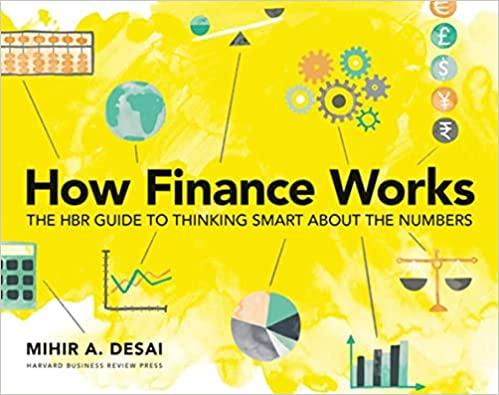Question
Your friends are going to Puerto Vallarta, Mexico, over Reading Week and you want to go too. Unfortunately, you haven't been good at saving, so
Your friends are going to Puerto Vallarta, Mexico, over Reading Week and you want to go too. Unfortunately, you haven't been good at saving, so you need to borrow $3000 to pay for the trip. You can finance the trip on your credit card at a rate of 26% APR with daily compounding. Alternatively, your parents (who are both bankers) are willing to lend you the money at a rate of 14% per six months compounded every six months. a. What is the EAR of borrowing with your credit card? (Assume 365 days in a year.) b. What is the EAR of borrowing from your parents? c. If you plan to repay the $3000 in equal monthly instalments, what would be the rates to use in the following annuity formulas to calculate your monthly payments. i. Assume you borrowed with the credit card. ii. Assume you borrowed from your parents. PV left parenthesis annuity of Upper C for n periods with interest rate r right parenthesis equals Upper C times StartFraction 1 Over r EndFraction left parenthesis 1 minus StartFraction 1 Over left parenthesis 1 plus r right parenthesis Superscript n EndFraction right parenthesis orPV left parenthesis growing perpetuity right parenthesis equals StartFraction Upper C Over r minus g EndFraction a. To convert an annual percentage rate, APR, into an effective annual rate, EAR, use the formula shown below, where m is the number of compounding periods per year. EARequalsleft parenthesis 1 plus StartFraction APR Over m EndFraction right parenthesis Superscript m Baseline minus 1 Identify the APR value by converting the given percentage into decimal form. APRequals0.26 Identify the value of m when the compounding is daily. mequals365 Calculate the effective annual rate, rounding to six decimal places. EARequals0.296810 Therefore, the effective annual rate is EARequals0.296810. b. The annual percentage rate, APR, is the effective interest rate per compounding periods multiplied by the number of compounding periods per year. Notice that the given rate is the effective rate per compounding
Step by Step Solution
There are 3 Steps involved in it
Step: 1

Get Instant Access to Expert-Tailored Solutions
See step-by-step solutions with expert insights and AI powered tools for academic success
Step: 2

Step: 3

Ace Your Homework with AI
Get the answers you need in no time with our AI-driven, step-by-step assistance
Get Started


